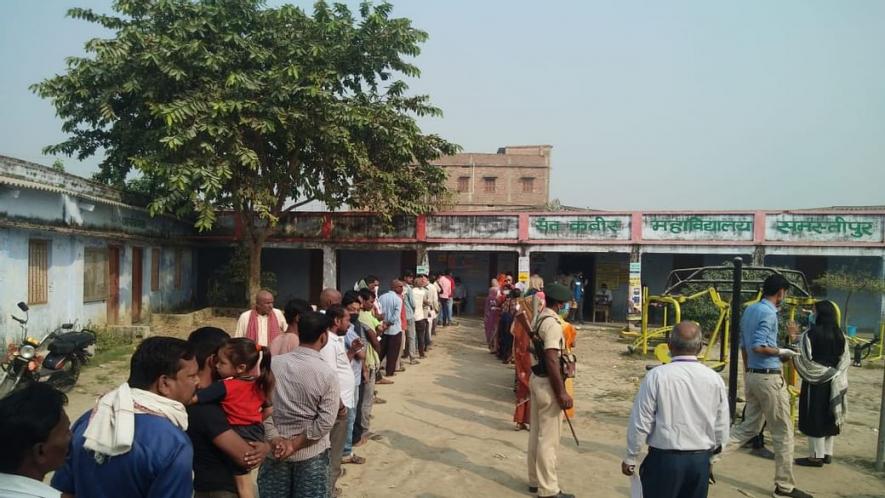Bihar’s Silent Voters: Explaining the BJP-JDU Alliance

Image Courtesy: National Herald
After a nail-biting counting day, the contest in Bihar was settled with the BJP-JDU combine narrowly managing to retain power. Tejashwi Yadav’s RJD ended up as the single-largest party, but the grand alliance could not reach the magic number. Within the Mahagathbandhan (RJD, Congress and Left), there are huge variations in performance of different parties. On the other side, there seems to be a similar story within NDA between BJP and JD-U.
The aggregate numbers obscure a much more nuanced picture of the mandate in Bihar. A cursory glance would suggest that the RJD has performed much better than in 2015, and it is only other parties in the Mahagathbandhan that let it down. Similarly, it seems that the JD-U has performed far worse in contrast to its partner, the BJP. It almost seems as if the BJP made a mistake by going with JD-U.
The real picture is more complicated. Consider the performance of the RJD. This time, it contested on 144 seats, much higher than the 101 seats it fielded candidates for in 2015. While the increase in RJD’s tally seems like a considerable improvement, looking at its strike rate—its ability to convert seats contested into seats won—shows it is down to roughly 52% as opposed to around 79% in 2015. The fact that RJD contested on a higher number of seats this time is obscured in the overall picture. Within the Mahagathbandhan, it is actually the Left parties which showed the most terrific performance, winning 16 of the 19 seats contested.
The Congress has been rightly blamed for pulling the Mahagathbandhan down. No doubt, it has performed the worst and ended up with the lowest strike rate, of around 27% among major parties (LJP not included). Many have argued that it was given way too many seats, which cost the Mahagathbandhan its victory. Had the RJD contested on more seats, the result could have been different. We can obviously never know the counterfactual. It should nonetheless be noted that the Congress was given many seats in traditional strongholds of NDA—their relatively low winnability is one reason why the party was able to bargain for 70 seats.
The massive gap in the performance of RJD and Congress still seems too much to be explained only by weak seats. The Congress has won fewer seats than 2015, when it contested close to half the number of seats it contested this time. One might say that perhaps the Congress did not pull down the tally for Mahagathbandhan as much as is being emphasised based on a cursory look over data. It, however, almost certainly did some serious damage—which, in a close competition as the Bihar polls were, could have made all the difference. Its performance in the bypolls in Madhya Pradesh, Gujarat, and Uttar Pradesh tells a similar story of decline.
Within the NDA, there is a stark contrast between BJP and JD-U if we look at the overall trend. While BJP’s tally went up significantly as compared to 2015, JD-U numbers dropped significantly (for those not familiar with Bihar politics, note that JD-U fought against BJP in alliance with RJD and Congress in 2015). The difference between the vote share of BJP and JD-U, however, is not as stark. An important factor for poor seat share of JD-U is spoilsport played by Chirag Paswan’s LJP, which got higher vote share than the margin of victory in more than a dozen seats where JD-U lost.
The obvious question many are asking is whether the BJP made a mistake by going with Bihar Chief Minister Nitish Kumar’s JD-U—the arguments against being that anti-incumbency against Kumar was high, which pulled down the tally of NDA. This argument implies that the BJP would have performed the same (or even better) without Kumar. It assumes that the BJP did not benefit from Kumar and JD-U. Yet, it is quite possible that the BJP managed to up its tally precisely because of the JD-U: Nitish Kumar is what makes the difference between winning and “almost winning” on many seats for his alliance partners.
Even though the JD-U failed to convert votes into seats, his vote share indicates that his core supporters almost remain intact. A significant part of his core support includes sections of Extremely Backward Castes (EBCs), Mahadalits and, arguably, women. It seems these groups stick with Kumar whichever side he goes—in 2015, they overwhelmingly seem to have voted for the JDU-RJD-INC combine. Polls and ground reporting often undercounts the support from Nitish Kumar core supporters as they are often “silent”.
Part of the reason for this silent support for Nitish Kumar among sections of EBCs and Mahadalits could be socio-economic factors: they are marginalised groups and, therefore, perhaps hesitant of being very open about their political support. However, another very important reason this time could simply be that these groups did not enthusiastically support Kumar but voted for him because they did not have any other option (being risk-averse). Like others, there may have been some anti-incumbency against Nitish Kumar among his core support groups as well, but they seem to be more afraid about the prospect of “Yadav rule”. They do not trust the BJP without Nitish for the same reason: only difference being upper caste elites instead of Yadavs. Hence, they remain on whichever side Nitish is in charge of. This provides the edge to convert votes into seats. The BJP seems to understands it well, and therefore lets Kumar remain the Chief Minister despite changes in dynamics within the coalition.
The author studies political science at Ashoka University. The views are personal.
Get the latest reports & analysis with people's perspective on Protests, movements & deep analytical videos, discussions of the current affairs in your Telegram app. Subscribe to NewsClick's Telegram channel & get Real-Time updates on stories, as they get published on our website.
























